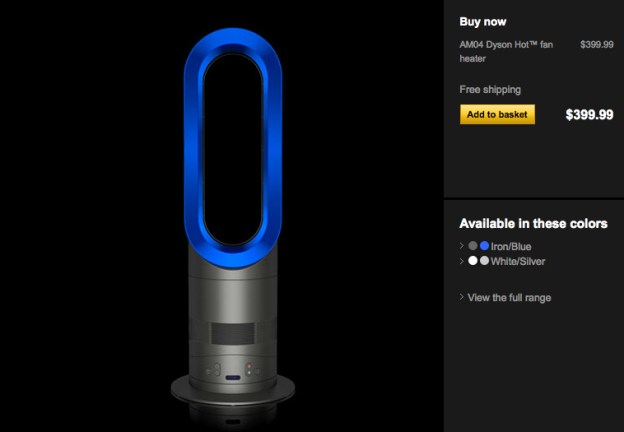 The cost of Brit inventor Jeremy Dyson’s latest invention may leave you feeling a little cold, but the product itself certainly won’t.
The cost of Brit inventor Jeremy Dyson’s latest invention may leave you feeling a little cold, but the product itself certainly won’t.
Called Hot, it does what it says on the tin. The description on the website of the new fan heater claims that it “projects heat further, heating the whole room faster than any other [heater].” But as with most Dyson products, the Hot will set you back a sizable sum of money – $400 (£270) to be precise.
Drawing on the technology found in its revolutionary Air Multiplier cooling fan released last year, the Dyson Hot has no fast-spinning blades, or any moving parts for that matter (although the loop can move from side to side to project the heat).
The device has been cleverly designed so that the only thing that gets hot is the space in which it stands – no part of the Dyson Hot itself heats up, so anyone with kids needn’t worry about the possibility of little Johnny screaming through the house with a crispy hand. It also cuts out if knocked over (by the aforementioned Johnny).
According to a Guardian report, Sir Jeremy’s new invention can also cool a room, as its temperature range goes from 33F to 98F (1F to 37C).
The Dyson Hot generates heat by passing air over 20 ceramic stones, which have been compressed to a solid state, before being expelled through a narrow vent that runs around the heater’s loop. And that’s putting it simply – 22 engineers spent over three years working on the technology used inside the Hot.
Its unique design also means that if you stand in front of it, you won’t experience any annoying buffeting.
Regarding the product’s hefty price tag, Sir Jeremy told the Guardian that “in hard times, people want something that will last, rather than something cheap that they will have to throw away after a short time.”
He added: “We’re appealing to somebody who wants to keep the product and have it provide pleasure over the years.”
For those who appreciate cutting-edge design and have the cash to splash, no doubt the Dyson Hot is looking like a tempting proposition.


